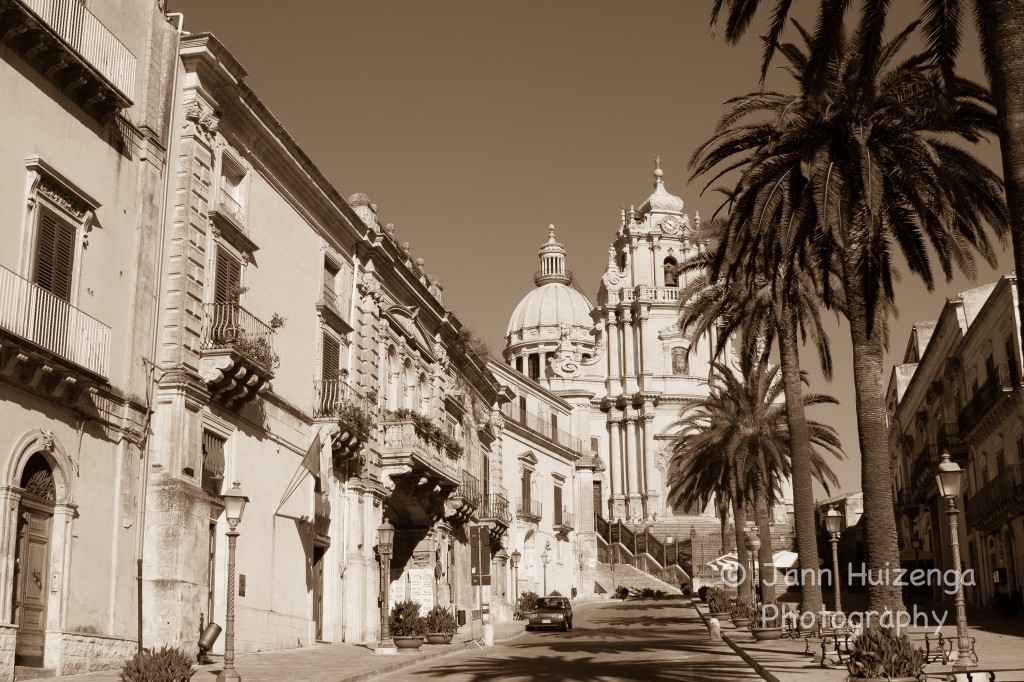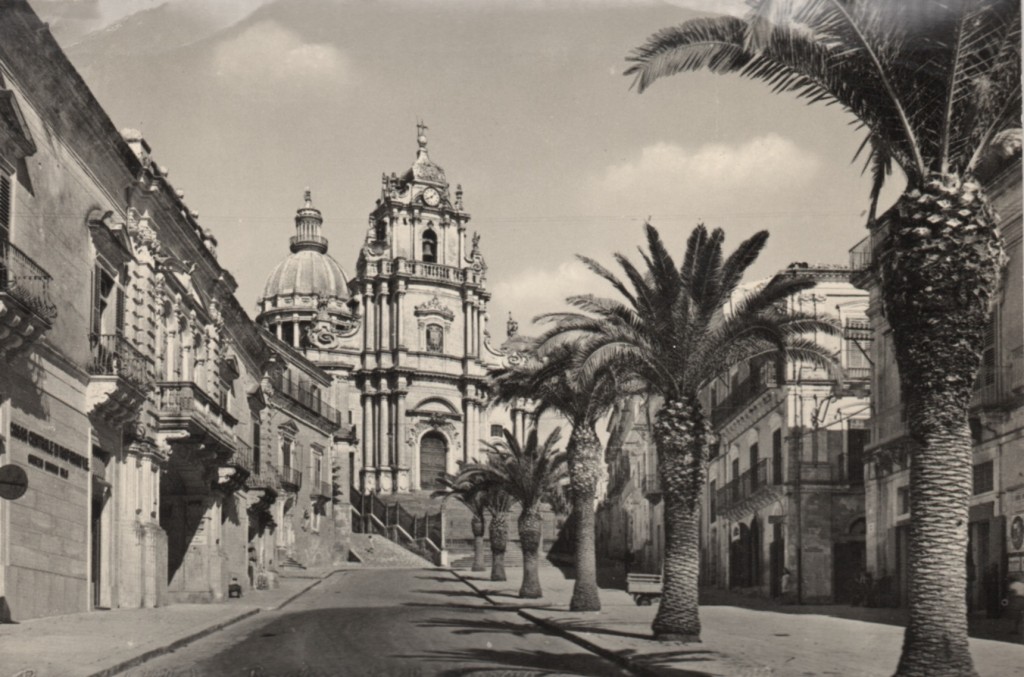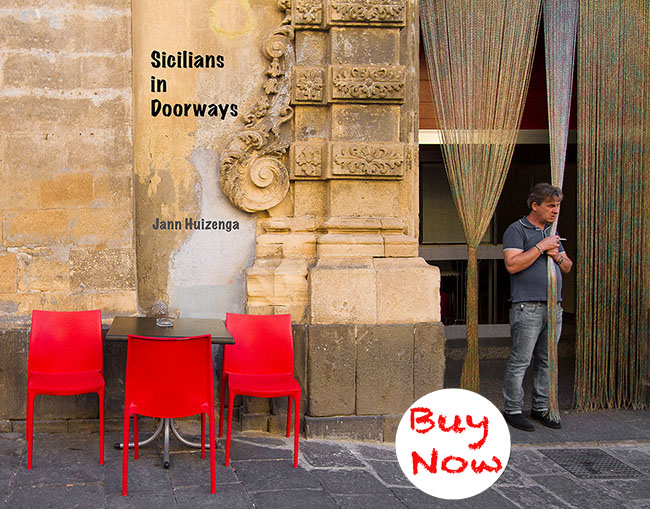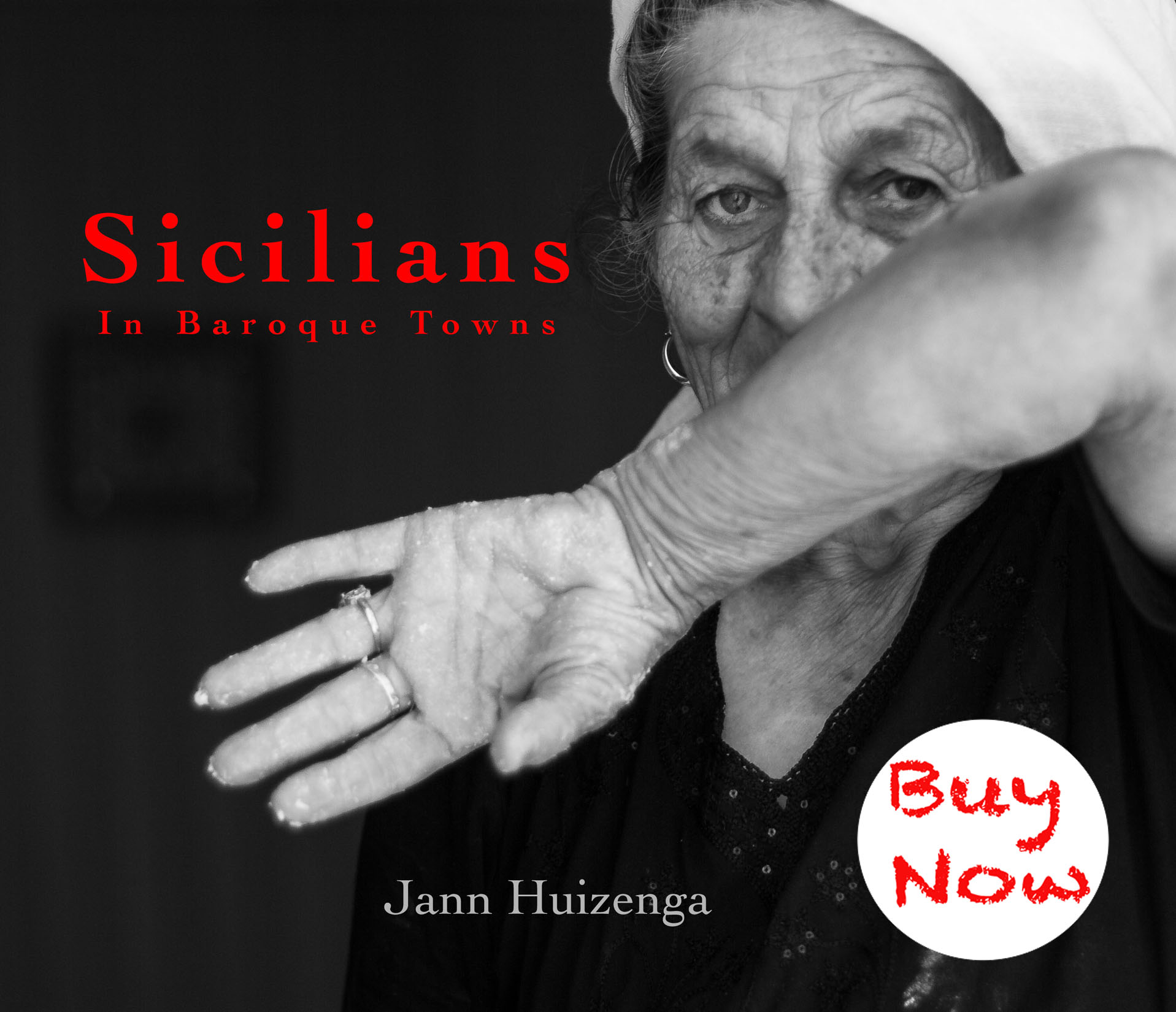March 4, 2014
Here’s my beloved Piazza Duomo, with the church of San Giorgio perched atop a high staircase, her chest puffed out, proud and lovely. The piazza is our salon–it is here that we celebrate, gossip, soak in the sun, raise a glass of wine, listen to the clamor of the bells.
And now a shot from days gone by. It’s from an old postcard–shot maybe 50-60 years ago? The clock appears to have been in working order back then, but other than that not too much has changed, thank goodness.
***







The 1882 photo was given to us by my father-in-law. My husband’s family and my family were from Ragusa Ibla. The works of art of my great-grandfather, Nunzio Lissandrello can be found in many churches in Ibla and surrounding area.
Jo, he was a wood sculptor, as I recall your telling me–right? I must start looking into his work. Thank you for the reminder.
And looking at the angle of the shadows, it looks like you took your photo at the same time of day, as well as the same season of the year.
Well, wow, Sam. What an odd coincidence.
I have a large framed photo hanging in my den of this very same view of Piazza Duomo and the Church of St. George taken on Holy Saturday in 1882. There are no palm trees, the pavement is not paved, and the piazza is filled with men, but no women are present.
On September 30, 1959 I climbed that long staircase in my wedding gown. It was one of the happiest days of my life.
Josephine, I love your story!!! I can just picture you going up those steps in your gown. Where did you get the 1882 photo??? It sounds so interesting!!
Love that word, salon, Jann. It says it all. What fun is sitting at home when you can watch the world go by in piazza. It’s a concept sadly missing round here. Alas!!! x
I say all architects and town planners from around the world need to spend at least a year in Italy.
Amazing. I LOVE looking at changes from older pictures. I found a pix of the very first photograph ever taken. I love that type history – and sitting in old buildings imaging the people who lived there!
Hmmm. I’m going to search out that first photo ever taken. Thanks Nan for stopping by! xxxx
What a ravishing place your home is. It’s actually improved with age. Love the pots of flowers and benches under the palm trees. The church is magnificent xx
Yes, I love my “salon” soooooooo much!
Still so much the same, Jann….except for a few street lights and new palm trees.
W O N D E R F U L
how some things stay the same.
XXxxxxxxxx
One of the old palm trees got diseased and was cut down. I got so upset at the change!! xxxxx
I was born in Ragusa in my grandparents’ bed in an apartment in Via Roma. I was baptized in that church and a few days later my parents caught the train back to Trieste where they lived. And over the years and many trips to Ragusa Ibla, it does appear to be unchanged. Great photos and such a great idea of yours to show the past and the present.
Ciao Marisa, I love your baptism story! xxxxx
Thank you for showing us that not much changes in your village. Piazza as salon is a great metaphor. I am always keen to learn more about the centrality of piazze in the history of Italian villages and cities. Such sensible town planning.
Yes, Francesca, previous generations knew how to plan towns. The current generation puts up industrial zones on the outskirts. 🙁
Amazing! It’s hard to believe that so little change has taken place in 50-60 years. Here, change is more the norm. Perhaps because of weather conditions like hurricanes or tornadoes; perhaps because of “progress.” There’s something lovely about finding what works and hanging onto it!
Debbie, there has been change on the outskirts of Sicilian towns, unfortunately. But the historical centers are well preserved.
I am going to visit Sicily in Sept. and hope to see this in person. Thanks Jann for your wonderful posting.
Hope you have a wonderful trip, JO.
timeless + lets hear it for Sicily + for keeping the sameness. xxpeggybraswelldesign.com
Peggy, thanks for your comment xxxx
Piazza Duomo is a so wonderful place…Bravo to Sicilians so as to keep their cities so preserved, and so unchanged…Amazing indeed…and your photo is so real and fantastic, Jann..Thanks..
Cemal, Italians are really good about preserving old towns and inner cities, but the peripheries can be bad…
Wow, Jann…. this is absolutely AMAZING!!!
Thanks Ria. xxx
I think I lost the last post. My ancestry is from Ragusa Ibla, and am cousin to Tina and Dr. Raffaele Cannizzaro. My gr grandmother is first cousin to Tina, and her mother was a Campo. Do you see a difference in the culture of Sicilian women, and women from other regions of Italy? i.e. Calabria? See my online magazine, Her Culture, on http://www.herculture.org
The second issue has a piece by Giovanna LaMarca, and you can see my grandmother, Ann Marie Miller, in her cousin’s kitchen in Cava D’Alga when she visited. I hope to come to Sicily one day – after I graduate from high school. Thanks for showing Ragusa Ibla to everyone. My grandmother loved the doors.
Hi Kate,
What a wonderful online magazine. Congratulations!! The culture of Sicilian women is changing very fast–I’d say there are many cultures, depending on which generation you’re looking at.
Oh, my goodness! Love this, Jann. A few lights and taller trees — everything else is the same. Timeless. Isn’t that one thing that makes Italy so special? She is timeless.
Yes, Rosann–if only there weren’t industrial areas on the outskirts of Italian cities and towns…. But historical town centers are kept so pristine.